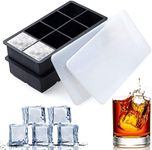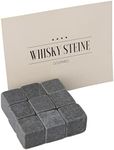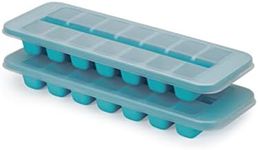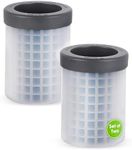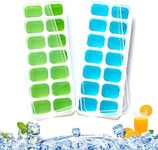Buying Guide for the Best Ice Cube Trays
Choosing the right ice cube tray might seem like a simple task, but there are several factors to consider to ensure you get the best fit for your needs. Ice cube trays come in various shapes, sizes, and materials, each offering different benefits. Understanding the key specifications can help you make an informed decision and find the perfect tray for your lifestyle.MaterialIce cube trays are commonly made from plastic, silicone, or stainless steel. The material affects durability, flexibility, and ease of use. Plastic trays are affordable and sturdy but can be harder to remove ice from. Silicone trays are flexible, making it easier to pop out the ice cubes, but they can be less durable over time. Stainless steel trays are durable and eco-friendly but can be more expensive and may require more effort to release the ice. Consider how often you'll use the tray and your preference for ease of use versus durability when choosing the material.
Cube Size and ShapeIce cube trays come in various sizes and shapes, from standard cubes to spheres, large blocks, and novelty shapes. The size and shape of the ice cubes can affect how quickly they melt and how they fit in your glass. Standard cubes are versatile and melt at a moderate rate, while larger cubes or spheres melt more slowly, making them ideal for cocktails. Novelty shapes can add a fun element to drinks but may not be practical for everyday use. Think about how you plan to use the ice cubes and choose a size and shape that fits your needs.
CapacityThe capacity of an ice cube tray refers to the number of cubes it can make at one time. Trays typically range from making 6 to 24 cubes. If you entertain often or have a large family, a tray with a higher capacity might be more convenient. For occasional use or smaller households, a tray with fewer cubes may suffice. Consider how much ice you typically need and how often you want to refill the tray when deciding on capacity.
Ease of ReleaseEase of release refers to how easily the ice cubes come out of the tray. This can be influenced by the material and design of the tray. Silicone trays are generally the easiest for releasing ice cubes due to their flexibility. Plastic trays may require a bit more effort, and stainless steel trays might need to be run under warm water to release the cubes. If you want a hassle-free experience, look for trays specifically designed for easy release.
StackabilityStackability is important if you have limited freezer space. Some ice cube trays are designed to stack neatly on top of each other, saving space and preventing spills. If you need to maximize your freezer space, look for trays that are stackable. This feature can also help keep your freezer organized and make it easier to store multiple trays.
LidSome ice cube trays come with lids, which can be useful for preventing spills and keeping the ice cubes free from freezer odors. Lids can also make it easier to stack trays. If you prefer to keep your ice cubes clean and free from contamination, or if you plan to stack multiple trays, consider choosing a tray with a lid.







